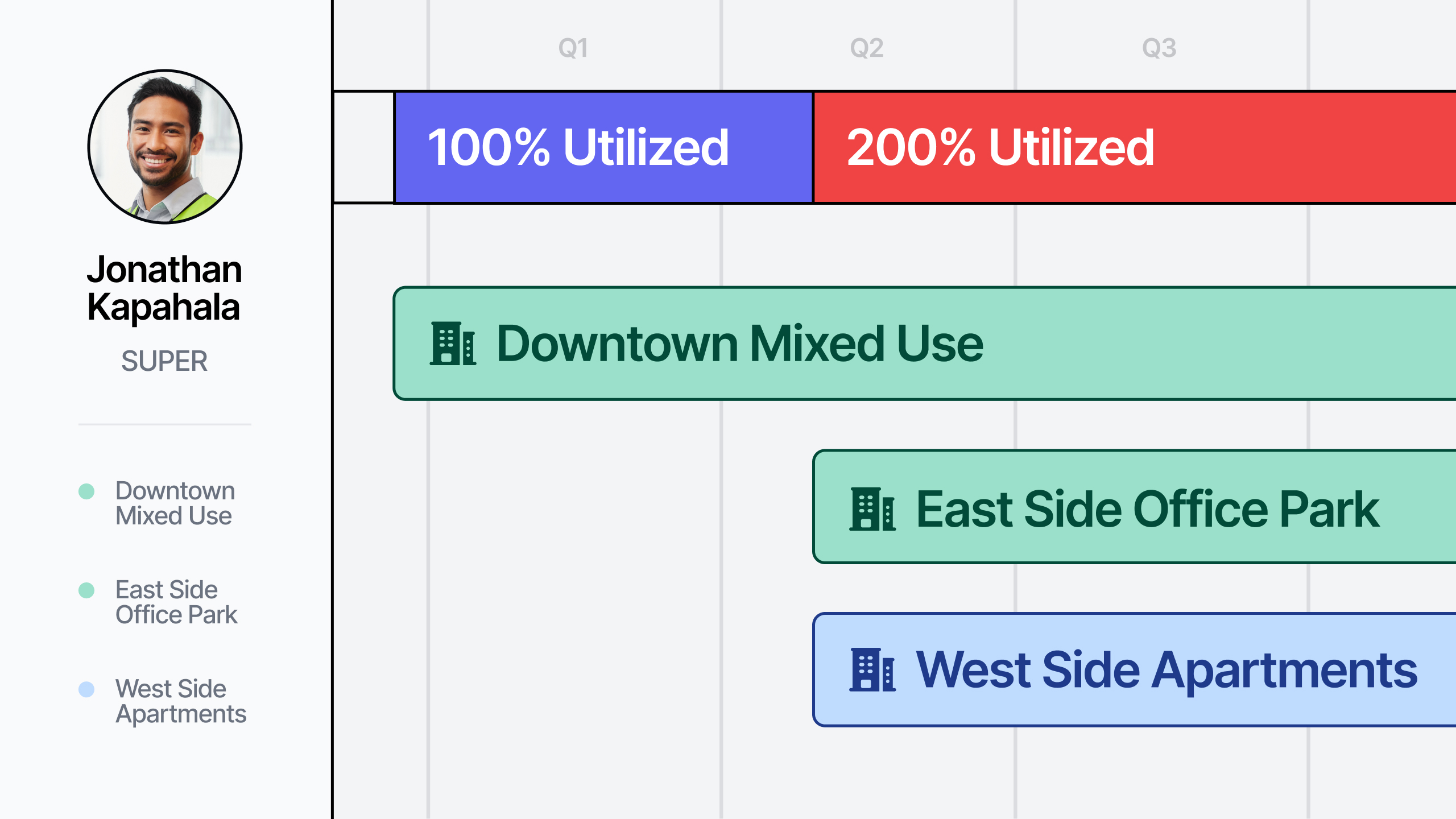
How to calculate workforce utilization rate
Utilization's effect on project execution and when over-utilizing can be necessary for your company
December 7, 2022
7 min read
Learnables

Michael Sullivan
Senior Growth Marketer

Take a look at any LinkedIn description or website “About Us” page of a general contractor and they’ll tell you how their clients are the best clients in the world, how they execute every project with sincere love and dedication, and how every building is wrapped in the world’s largest bow and smells of vanilla and peaches when it’s finished.
But the reality, of course, is that the quality of a general contractor’s completed work is symbiotic with the correctly chosen scope of work that they’re actually capable of undertaking. Strategically sound workforce utilization leads to a successful project.
Utilization’s connection to project execution
A general contractor’s annual construction volume should only increase in tandem with their staff’s workload thresholds. If a GC took on more work than their existing staff could manage, those projects would inevitably suffer, the GC’s reputation would take a hit, their client relationships would be in jeopardy, fire rains from the sky, etc. You get the picture.
On the flip-side, a general contractor could have an incongruent staff with its breadth of projects where too many employees are “just sitting around,” ie., their utilization rates are dramatically below 100% on a consistent basis. This shoddy workforce management directly undercuts profit and implies the GC needs to either take on more projects to justify their bloated headcount or shave said bloated headcount. In a pinch, neither is ideal.
All this to say, a GC’s true utilization rate directly dictates how much work they should be taking on each year. When utilization aligns with construction volume both presently and on upcoming jobs, only then can a GC’s “About Us” boast that they’re the best for the job actually be true.
How to calculate workforce utilization
Previously, we looked at workforce utilization in construction and how it’s a vital metric for general contractors to keep track of. For GCs that wish to bolster their project execution (including in regards to safety), get the most from their team without burning anyone out, and hit their profit goals, it behooves them not only to consistently track utilization rates of their employees but let it influence the entire methodology behind their workforce planning.
Let’s go through how we would calculate utilization.
Each individual worker has their own utilization rate, which is expressed as a percentage. Utilization rate is the number of an employee’s billable hours in a week divided by the total number of available work hours in a week.
For example, if your project manager is billed for 28 hours out of a 40-hour work week, their utilization rate would be 70%. If your superintendent on multiple projects does some overtime and is billed for 52 hours out of a 40-hour work week, their utilization rate would be 130%.
To calculate your company’s overall utilization rate, you would simply take the sum of everyone’s utilization rates and divide by how many employees there are. Bulk utilizations by project or business unit can be helpful when comparing projects completed with different utilizations alongside the quality and/or satisfaction of clients.

What is the ideal utilization rate?
So what percentage should you be shooting for company-wide?
That’s a difficult question to answer objectively as it depends entirely on the temperaments, work ethics, personal lives, project scope, and countless more variables of your personnel. Any utilization rate below 100% of course means you’re leaving money on the table. A consistent 100% across the board, however, also suggests possible overwork which could lead to burning out.
Since there’s no ideal utilization rate, it’s best to shoot for what works for your company on the micro-level. Rather than set an overarching standard of utilization, micromanage on an individual utilization level and let what turns out to be the average be your company-wide figure.
On the individual level, you should consistently aim to book for 100% but take the foot off the gas throughout the calendar year. The ebb and flow of utilization will provide variety as well as assuage the feeling of burn-out.
An open line of communication with your staff will be important to understanding where adjustments on the fly need to be made. Rotating sub-100% utilization also means that there is time for non-billable administrative work as well as time that could be spent developing your team rather than them grinding forever at their current skill level.
Is over-utilization ever the right decision?
On the other end of the spectrum, sometimes you’ll need to over-utilize (> 100%) simply because you need certain team members going above and beyond on projects. The reasons for this decision can vary; the GC needs to cut corners for profit, the individual craves more work, you don’t have many skilled workers and multiple projects really need so & so.
Some reasons for over-utilization are learning lessons on how you should adjust so it doesn’t happen again. Over-utilization is inevitable and sometimes preferable depending on circumstance.
Buildr's workforce planning empowers general contractors to better manage their people
Stay in the loop
Seriously, you should sign up to be a construction insider. Everyone will be so jealous of you.